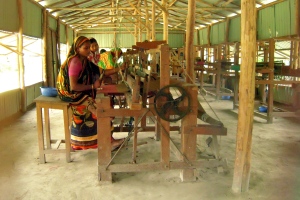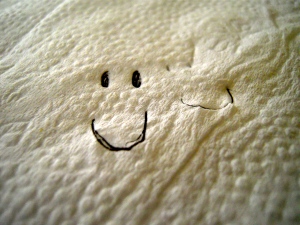*July 9, 2011
On the mainland right outside of EFH each day, a sizable group of men gather to play football (that’s soccer for my American friends out there) right around sunset. Some of the players are from EFH and others come from around the char. In a weird way, I kind of envy them. More than merely just watching sports, I love participating, even though I may not be very good. I’ve thought about tossing the ball around with them several times, but each time, chose to stay away, reasoning it would be weird to socially insert myself this way. I continued watching and cheering from the dock of the boat.
However, today, I was watching the daily game on the grass with several workers from EFH and behind us, a scene started to unfold. A boat landed, several dozen men got out, and instead of the boat gliding away like usual, all of the men circled it and worked to lift it out of the water and onto the mainland. They chanted as they pushed, drawing attention from everyone surrounding them. I commented how I wish I had brought my camera. One of my colleagues, Hasib Bhai, had come ready – he flipped out his camera phone and started capturing the spirited event, jokingly stating that I had failed as a bideshi and that he wouldn’t share the footage.
I felt odd as a spectator when those I was watching were working so hard. I voiced this uneasiness, too, telling Hasib Bhai how I wish I could help the men. He said, half-teasingly, “Go. Do it. Go and help them.” I thought, a football game is one thing, but collective effort is another.
So I joined in and Hasib Bhai ended up sharing the footage with me. After the push, I got several big, appreciative smiles from some of the men, if not for my actual power, then just for my effort. I think my mom and dad will think it’s funny that my colleagues ended up calling me “Burcu Bhai” for several days after this.*
*Note: The footage is from a camera phone, so you may want to adjust the volume as you’re watching.
Just something fun! Here’s a recap…
- Minute 0:20: Heated debate about boat-sliding strategy.
- Minute 0:50: A bit of an awkward moment. All the men are probably thinking, “Umm, what?” or “Did that just happen?”
- Minute 1:09: Kind words from Hasib Bhai, warning me to be careful because the boat will be slippery.
- Minute 1:55: Subtle (or maybe not so subtle?) recruitment of men from one side of the boat, to mine.
*FYI- Although this might be a little late in the game, ‘Bhai’ is generally a term used to reference other men in a respective manner, while ‘Apa’ is used in the same way for women.





